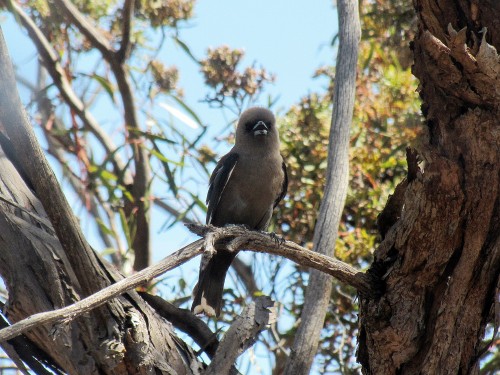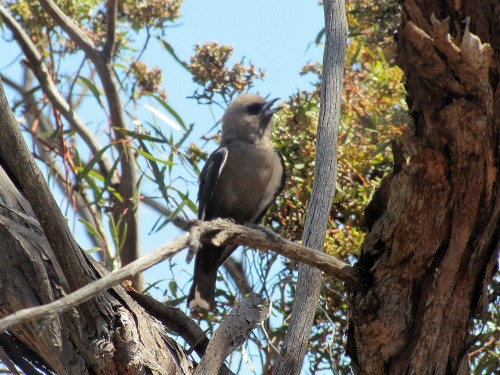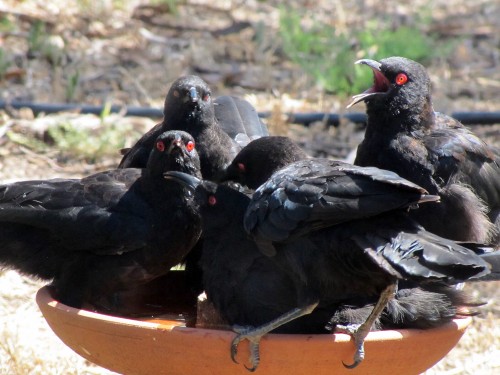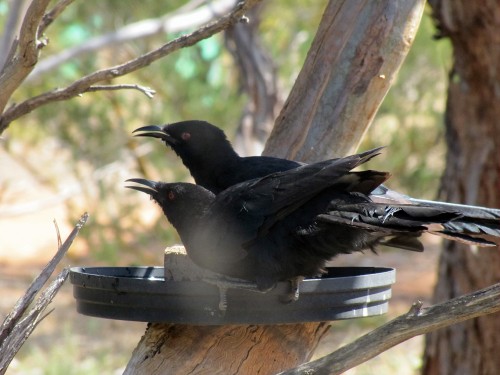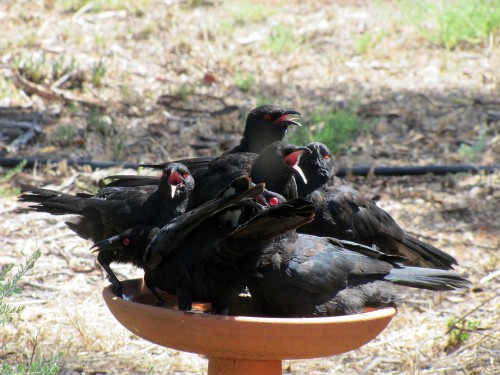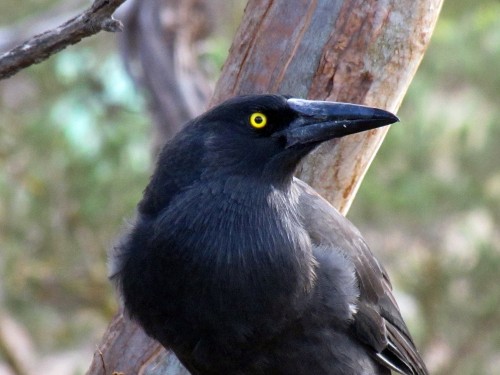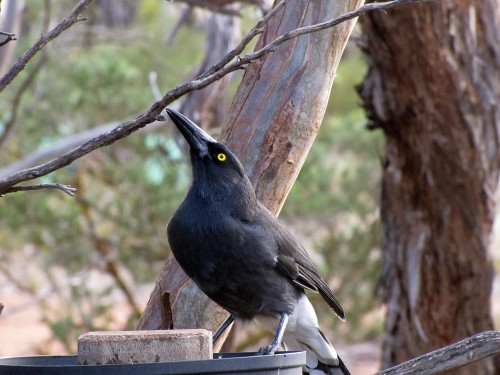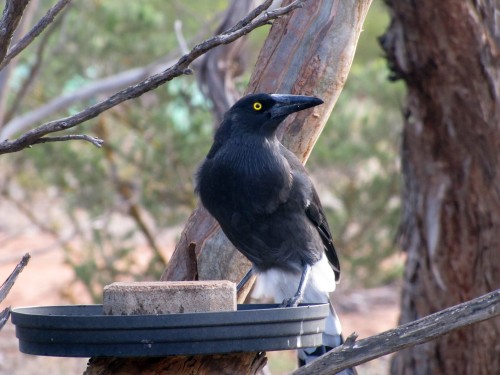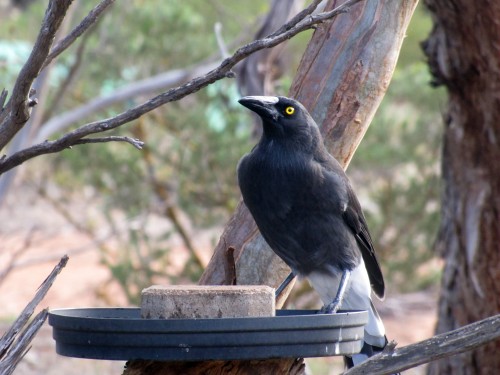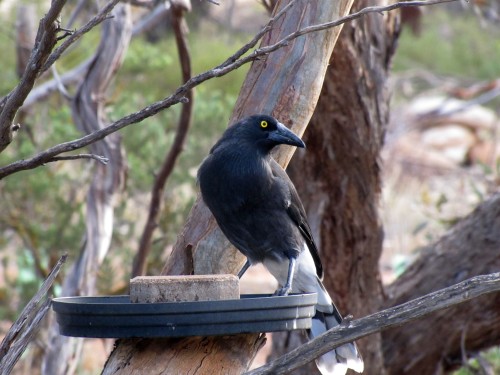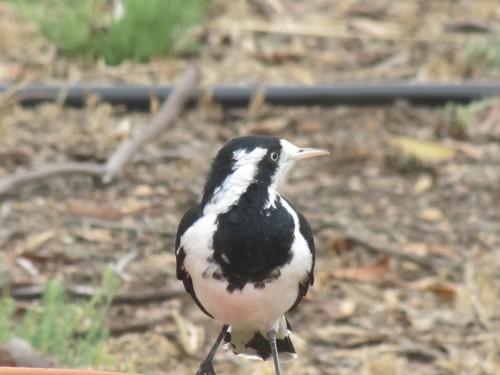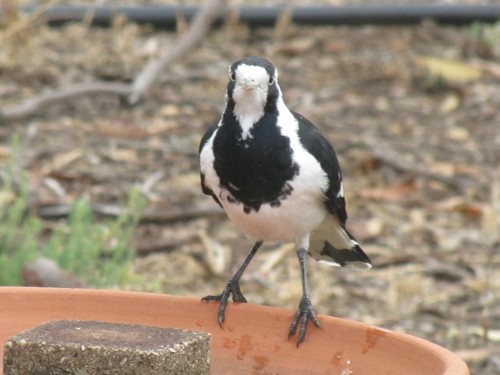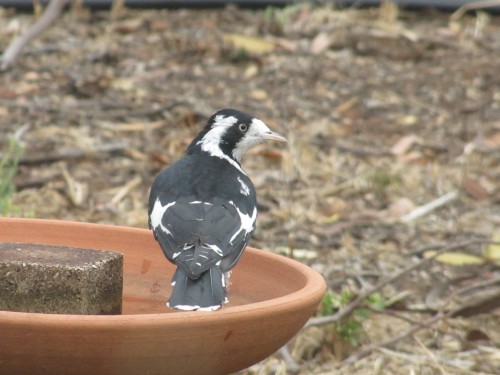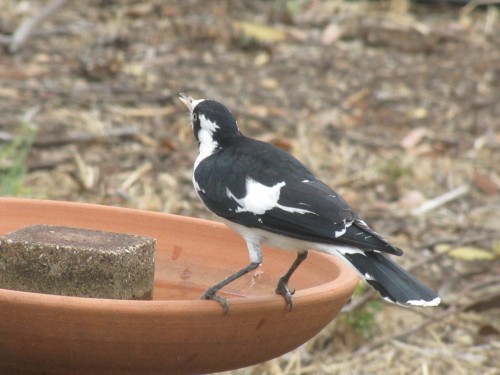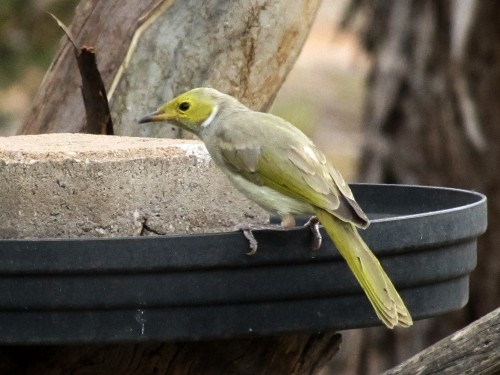Dusky Woodswallow
I took this series of photos during one of our periods of heat waves recently. As I’ve written in recent days, we had here in South Australia one of our hottest summers on record. The bird baths in our garden were extremely popular with all the bird species in our garden. They probably assisted some of them to survive the extreme conditions, with temperatures often reaching into the 40s and occasionally as high as 46C (115F).
The Dusky Woodswallow shown in today’s photos is one species I would regard as an infrequent visitor to our garden. It is an even less frequent visitor to our bird baths, so this was a good sighting.
Make room for me
We have many different species come to visit our bird baths. They come either for a drink or for a bath – sometimes both. Many of these species are quite small, such as the thornbills and pardalotes. At the other end of the scale where size is considered would have to be the Little Ravens, Grey Currawongs and of course, the White-winged Choughs, featured in today’s photos.
This series of photos was taken during our recent heat wave in South Australia. Our capital city Adelaide saw a 117 year record broken: 13 days over 40C over the summer, previously 11 days. Here in Murray Bridge we certainly have more than that. During hot weather the birds flock to the water throughout the day. Refilling the baths is a daily task.
The White-winged Choughs all seem to crowd onto the one bird bath, each wanting a piece of the action. It is quite comical to witness the jostling and arguing over the prime positions. Sensible birds take up a position on one of the other bird baths nearby.
Giving an evil eye?
When we bought our home some 30 years ago we never heard or saw Grey Currawongs in our garden or anywhere on our five acre block. They are moderately common and widespread in the district, and this is also true throughout their normal range in southern Australia so it was surprising that we never saw this species in the first decade we lived here.
It appears that several birds moved into the mallee scrub area up the road about a kilometre on a hill overlooking our property. When they called – something which happened only occasionally – we were aware of their presence.
About ten years ago several individuals would occasionally either fly over head, or settle briefly in one of our trees before moving on. This happened every month or so. About five years ago a pair started frequently following their offspring onto our property. These visits occurred every few days.
Now they are relatively regular visitors, even coming to our bird bath on hot days. When they do this it gives me a great opportunity to take a series of photos, like those shown today. These were taken last week during our most recent heat wave.
When you have close up views of this species you suddenly realise how big they are, compared with most of the birds which visit the bird baths. They are much larger than the Australian Magpie-larks, a little larger than Australian Magpies and even the Little Raven. They are certainly much larger than the many honeyeaters which come to drink, and the dainty pardalotes, thornbills and silvereyes are positively minuscule in comparison.
And how about that glaring eye?
Positively gives me a creepy feeling.
Magpie Lark posing
Australian Magpie-larks are a resident breeding species in our garden. The usually make their mud-lined nests in one of the tall eucalypt trees next door, but some years ago they decided that one of our trees was suitable.
Despite not gracing us with their lovely nests, I regard them as a resident species. We see them in our garden every day and they are frequent visitors to our bird baths, especially on hot days. And we’ve had plenty hot days over this summer, including a record breaking series of heat-waves.
During one visit last week I managed this series of photos of a female as she came to the bird bath. Usually they come in pairs, calling loudly as they approach and then drink.
White-plumed Honeyeater up close
One of the facilities on my camera (a Canon PowerShot SX20 IS) that I appreciate is the ability to zoom in on birds from a distance. This shot of a White-plumed Honeyeater at one of our bird baths is a case in point. The photo was taken from our sun room at a distance of about 9 metres – I just went outside to step it out!
The zoom allows me to get close up shots like this while keeping a distance from the birds so as not to disturb them too much as they go about their everyday lives. In this case I had the added bonus of being inside the house shooting through a large glass window overlooking the garden. The room acts a bit like a bird hide.
While this is not a brilliant photo – the focus could be sharper – I still find it satisfying to get up lose and personal with our bird life.
